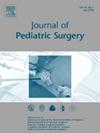Aspartate Aminotransferase-to-platelet Ratio Index (APRi) as Biomarker for Liver Damage in Biliary Atresia (BA): A Meta-analysis
IF 2.4
2区 医学
Q1 PEDIATRICS
引用次数: 0
Abstract
Background
Biliary atresia (BA) is a severe paediatric liver disease causing cirrhosis without prompt treatment. Aspartate aminotransferase-to-platelet ratio index (APRi), a non-invasive biomarker, shows promise in assessing fibrosis and cirrhosis severity, offering an alternative to liver biopsy. However, standardised criteria and research on APRi accuracy in paediatric BA, especially across diverse populations, remain limited.
Objectives
To assess the correlation between APRi values, liver fibrosis and cirrhosis severity in children with BA, evaluate APRi's diagnostic accuracy and clinical utility, and identify appropriate cut-off values for significant fibrosis and cirrhosis.
Methods
This systematic review and meta-analysis, conducted per PRISMA guidelines, evaluated non-invasive biomarkers for liver fibrosis in BA patients. Data were managed using REDCap and analysed with R software. Heterogeneity was assessed with the Cochrane Q test and I2 values.
Results
Fourteen studies (retrospective, prospective, and one cross-sectional) examined APRi and liver fibrosis in BA. APRi cut-off values for diagnosing fibrosis and cirrhosis ranged from 0.7 to 2.26 for advanced fibrosis (F3). The meta-analysis provided pooled means and 95% confidence intervals for APRi, assessing its diagnostic performance. Significant heterogeneity was noted in studies with favourable histology, while none was observed in those with unfavourable histology, highlighting variability in APRi values.
Conclusion
Limited patient numbers and significant heterogeneity across studies impeded the establishment of a definitive threshold for identifying unfavourable histology in BA. Consequently, APRi's clinical utility remains unclear. Further research is required to determine its precise role as a biopsy surrogate and in clinical decision-making during BA diagnosis.
Type of article
Study of diagnostic test.
Level of evidence
IV.
求助全文
约1分钟内获得全文
求助全文
来源期刊
CiteScore
1.10
自引率
12.50%
发文量
569
审稿时长
38 days
期刊介绍:
The journal presents original contributions as well as a complete international abstracts section and other special departments to provide the most current source of information and references in pediatric surgery. The journal is based on the need to improve the surgical care of infants and children, not only through advances in physiology, pathology and surgical techniques, but also by attention to the unique emotional and physical needs of the young patient.

 求助内容:
求助内容: 应助结果提醒方式:
应助结果提醒方式:


